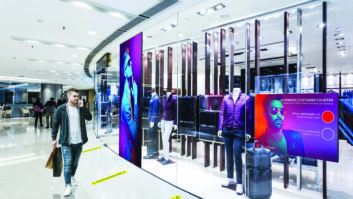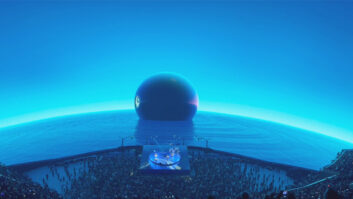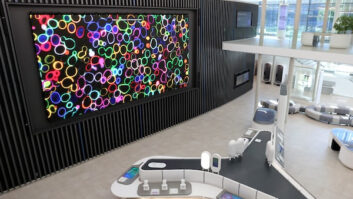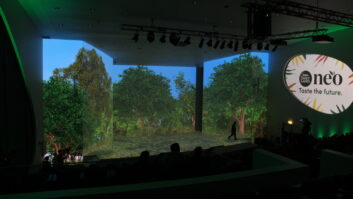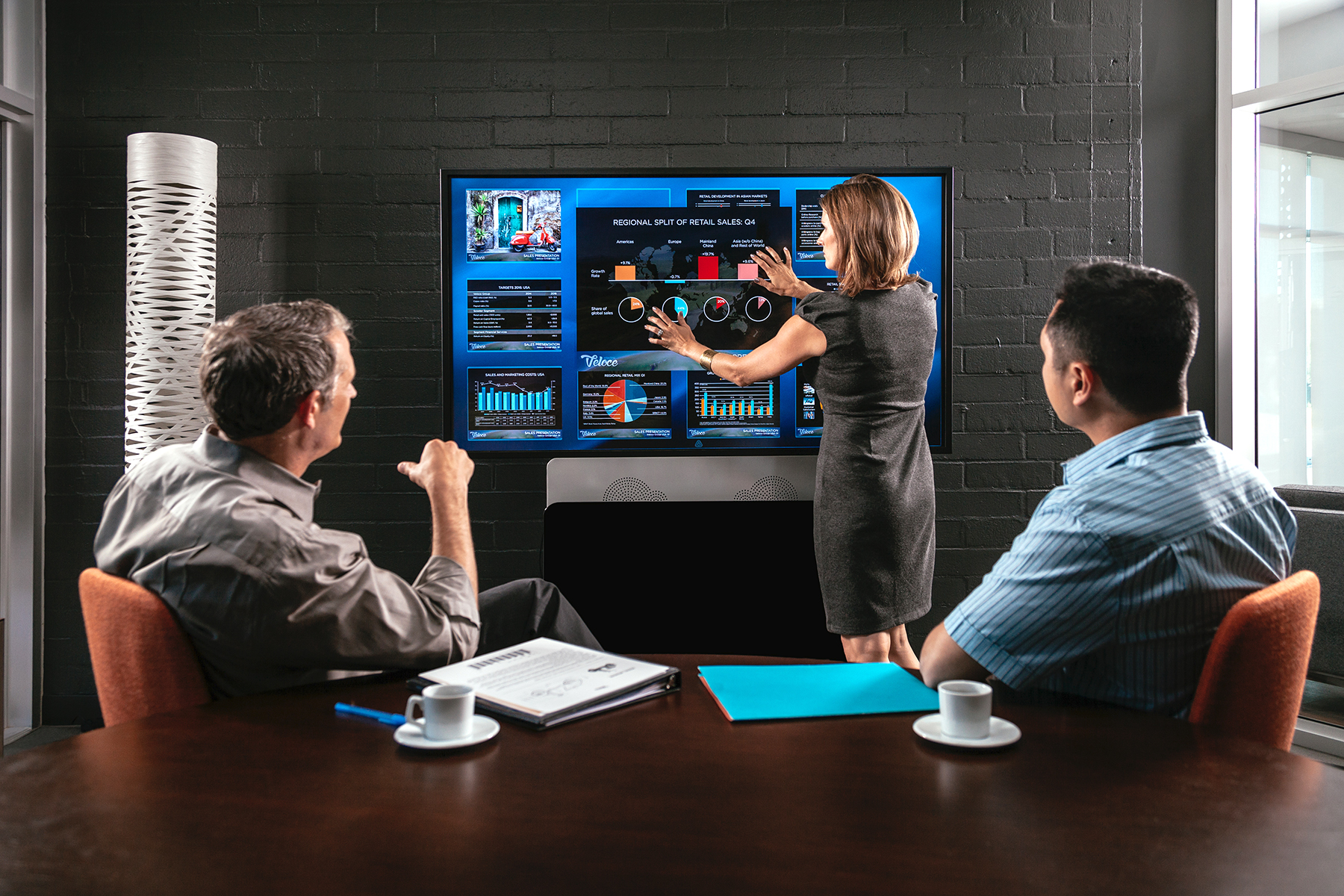
Having presented the evolving landscape of 4K and discovered that not all 4K is created equal, we conclude our feature by looking into the near future and if and when 4K will become dominant.
The obvious question becomes: when will we reach the point at which 4K will fully supersede 2K?
“In commercial applications, we’ve already passed the tipping point where 4K is the mainstream solution,” believes Tim Messegee, VP, marketing at Prysm. “That won’t be because of 4K content, but because of the real estate 4K provides for collaboration and other applications. There are complete 4K solutions available now, but there will always be continued improvements in the capabilities of 4K-enabled solutions.”
“That’s a really tough question,” answers Mark Armon, product manager at TV One. “I’d say it would likely be five years. But that said: as soon as we finish with 4K, 8K or 12K will be shown at the next Consumer Electronics Show. But,” he laughs, “if you pulled fibre, it won’t matter.”
Crestron’s product manager for DigitalMedia, Justin Kennington agrees on the timescale. “Everyone is utilising 4K because, with Crestron, 2K and 4K are the same price. As the technology progresses, 4K will be the only solution. It offers higher resolution and bandwidth over 2K – so why wouldn’t someone buy 4K?” he asks. “We expect 4K to completely take over any legacy 2K products within five years.”
“Economics will drive the pace of transition,” replies Jeff Hastings, CEO of BrightSign. “The screens are already proving very popular within the consumer market, which is driving screen manufacturers to switch their commercial production to the new standard. HD screens will become more and more difficult to find. While it will be some time before the huge installed base of HD and even SD screens disappears, I believe most new installations will be specified as 4K within a year or so. In other words, the majority of large-format screens deployed in 2017 will be 4K.”
“In the projector world, the latest laser light sources are providing a wide colour gamut that essentially meets most of the Rec. 2020 requirement,” claims Christopher Parker, senior product marketing manager, NEC Display Solutions Europe. “On the monitor side, there is still more research and development needed, but it is hoped that backlight quantum dot technology will be the key to reaching Rec. 2020 compliance. In effect, 100% compliance with all aspects of the Rec. 2020 standard will mark the point at which 4K can be considered ‘complete’.”
Chris Ault, reseller account manager at LG Electronics UK is cautious, however. “4K might never completely take over if the needs from different market sectors don’t require it,” he says. “People are confident with what they know, so if a solution isn’t broken, they are unlikely to want to fix it.
“The consumer market is always a good indication of how quickly trends that we are accustomed to in the industry will become mainstream,” he continues. “Major TV stations are still not broadcasting in 2K, let alone 4K, so the wider market is still not fully aware of the differences.”
Messegee injects a note of realism. “I think customers are best served by making investments that will benefit their businesses today,” he judges. “It’s the nature of technology that it is always evolving and there is never a final destination. Our solutions are highly adaptable, they can start making an impact in our customers’ businesses now, and can scale and help future-proof their investments for new developments in technology.”
Confusion
There can be little doubt, given the widely divergent views in the industry, that the state of 4K is a confusing one. Some claim that the infrastructure is all in place – others, that there remain significant holes. Some see markets such as rental/staging and retail moving to adopt 4K rapidly – others, that they are resisting it.
The situation isn’t made clearer by confusion about terminology. 4K and UHD/UltraHD are used, in many cases, interchangeably – and the waters are muddied still further by the fact that ‘true’ 4K (or UltraHD) is in a state of transition as it migrates towards 60Hz refresh and a 4:4:4 colour space. And, as many note, ‘true’ 4K will create its own set of challenges given the enormous bandwidth it will require.
The conclusion has to be that the 4K market remains something of a minefield for the unwary. Development of the supporting infrastructure is proceeding at a rapid pace, meaning that it’s vital that integrators and end users stay abreast of rapid changes. Technology dead-ends are a real threat: this year’s installations need to have a clear view of where the world will be in five years’ time, and to be planned accordingly.
But then: perhaps it were ever thus. As Green Hippo’s AViary business development director, James Ross Heron sagely points out: “4K will be almost complete when the industry is halfway into 8K,” he smiles. “Welcome to the world of AV.”
AMX by Harman
Brightsign digital signage solutions
Calibre 4K switching
More about Digital Projection
Green Hippo Hippotizer media servers and AViary Video Tools
For more on LG’s 4K products
NEC’s 4K product portfolio
Prysm 4K videowalls and Cascade collaboration
TV One processors
Crestron control systems

